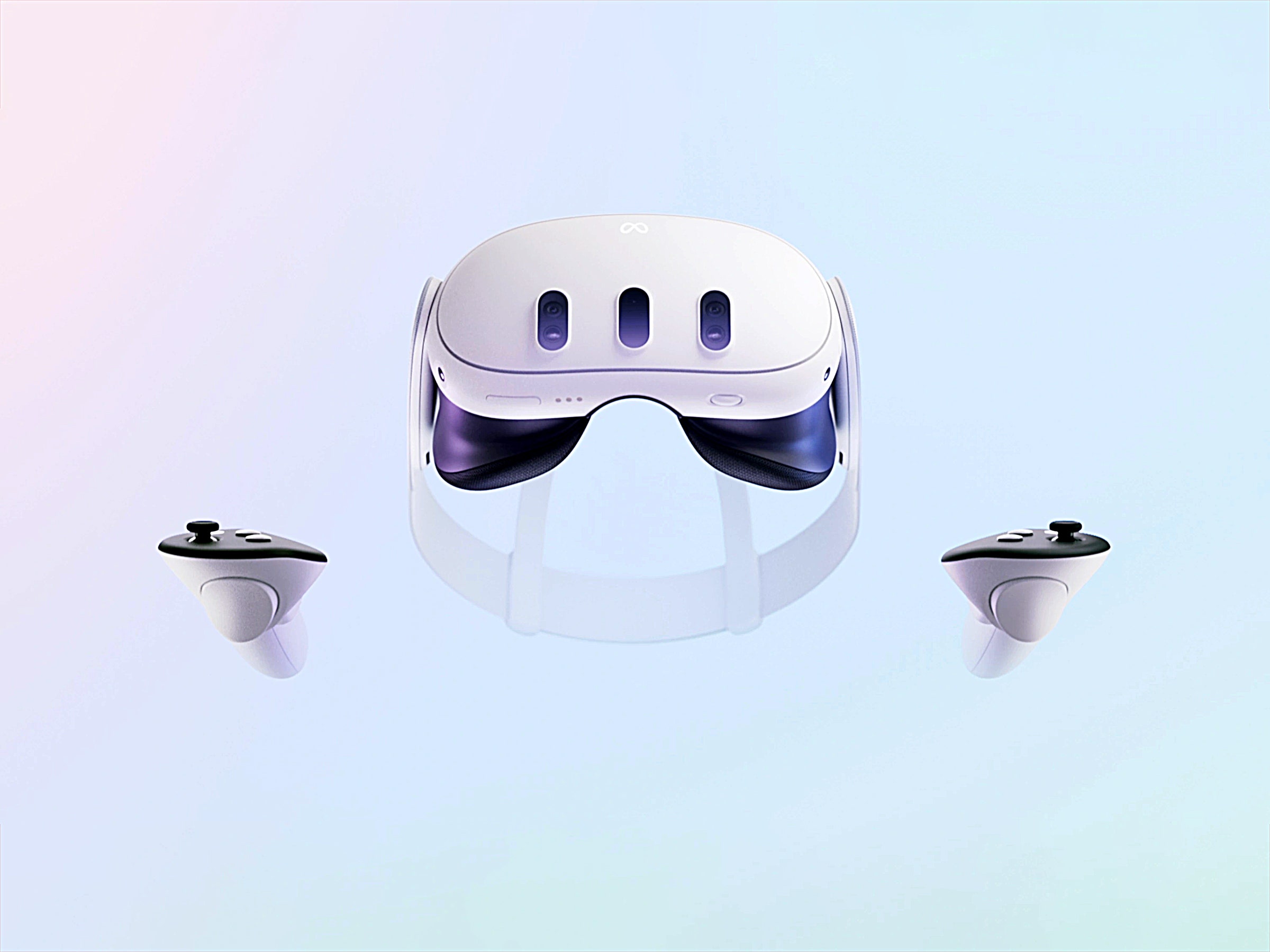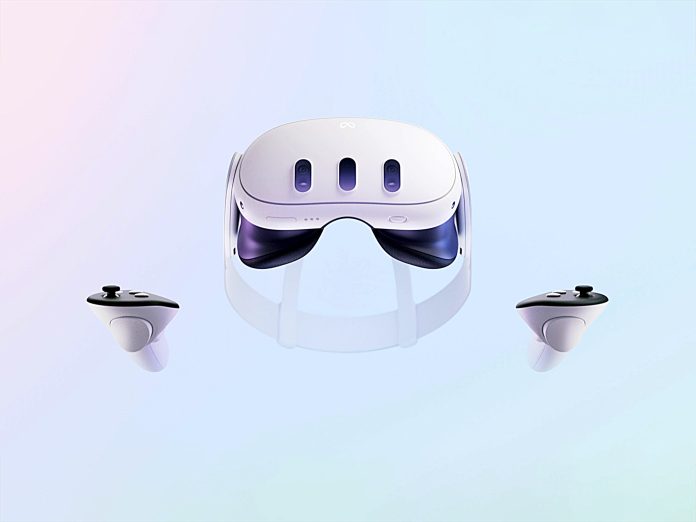The Meta Quest 3 is the latest iteration of Meta’s highly successful Quest VR headset lineup, building on the foundation laid by its predecessors. The Quest 3 promises to take virtual reality experiences to the next level with a host of new features, improved performance, and a sleeker design. But does it live up to the hype? After testing it extensively, here’s my in-depth review of the Meta Quest 3.
Design & Comfort
Meta has refined the design of the Quest 3, making it lighter, more comfortable, and visually appealing. The sleek front casing is made from high-quality materials, and the headset maintains a balanced, ergonomic feel.
The head strap is adjustable, and the padding is soft, providing a snug fit that reduces pressure on the face. The overall weight is also reduced compared to the Quest 2, making extended VR sessions less taxing.
The faceplate has a subtle texture, which helps with both grip and aesthetics. Importantly, the Quest 3 comes with a new, more breathable design, which prevents excess heat from accumulating during long gaming or media-viewing sessions. Meta has also added customizability to the facial interface, offering different-sized face cushions to accommodate different users.
Visuals & Display
Meta Quest 3 brings significant improvements to the display, featuring a new high-resolution LCD panel. It boasts a 2064 x 2208 resolution per eye, which is a substantial upgrade from the Quest 2’s 1832 x 1920.
This results in crisper, more vibrant visuals and a reduced “screen door effect” – the grid-like artifact seen on older VR headsets. The increased pixel density allows for more immersive experiences, whether you’re playing VR games or watching 360-degree videos.
The Quest 3 also offers a 120Hz refresh rate, ensuring that movements in VR are smooth and fluid. Combined with the powerful new GPU, the headset offers a more responsive and seamless experience, whether you’re navigating virtual environments or engaging in fast-paced action games.
Another standout feature is the mixed reality (MR) capabilities, thanks to its depth-sensing cameras. This allows for “Passthrough” augmented reality (AR), where users can see the real world through the headset’s cameras, overlaying virtual elements in the environment. While still a work in progress, this opens up new possibilities for interaction, blending VR and AR in a way that’s more advanced than what we’ve seen in previous headsets.
Performance
Powered by the Qualcomm Snapdragon XR2 Gen 2 chipset, the Meta Quest 3 offers a huge leap in performance compared to the Quest 2. This next-gen processor ensures faster load times, enhanced graphics, and better energy efficiency, which is critical for long sessions in VR.
Gaming performance is impressive, with many titles running at smooth, consistent frame rates, even when the action intensifies. Popular VR games like Beat Saber, Moss, and Resident Evil 4 VR look stunning, with sharper textures and improved frame rates. The new chipset also means better AI processing for more realistic environments and interactions in VR.
The increased RAM (12GB) also ensures that multitasking and loading heavy apps won’t cause any slowdowns or lag, a common issue with older models.
Tracking & Controllers
Meta has refined its tracking system for the Quest 3. The headset comes equipped with four cameras that offer inside-out tracking, meaning there’s no need for external sensors. The Quest 3’s tracking is precise, even in larger play spaces, and it works well in both seated and standing play modes.
The new controllers, which are similar to those in the Quest 2 but with enhanced ergonomics, feature better grip and a more natural feel during gameplay. They also come with improved haptic feedback, which helps to immerse you in the experience.
The improved “Finger Tracking” capability further enhances user interaction, allowing you to use your hands in certain apps and games for more natural gestures.

Battery Life
Battery life is typically an area of concern for standalone VR headsets, but the Meta Quest 3 fares reasonably well in this area. On average, users can expect between 2 to 3 hours of usage, depending on the intensity of the content. For gaming, this may be closer to 2 hours, while video streaming or lighter applications could stretch the battery life further. While it’s not groundbreaking, it’s on par with other VR headsets in the same category.
Software & Features
Meta continues to offer a robust library of content with the Quest 3. The Oculus Store is filled with a wide range of games, apps, and experiences that cater to all tastes, from immersive gaming to fitness apps and social VR spaces. The integration of the new “Meta Horizon” platform also provides a more social experience with its virtual hangouts, multiplayer games, and shared VR spaces.
Additionally, Meta is continually improving its Passthrough feature and has integrated several hand-tracking options into the interface, which adds an extra layer of usability when interacting with the menu system.
Price & Value
At a starting price of $499 for the 128GB version, the Meta Quest 3 is positioned as an affordable entry point into high-quality standalone VR. While it’s pricier than its predecessor, the improved display, performance, and new features make it a worthwhile investment for enthusiasts or those who are just stepping into VR for the first time.
Final Thought
The Meta Quest 3 is a remarkable VR headset that blends impressive performance, stunning visuals, and new features like mixed reality capabilities. It’s a significant upgrade over the Quest 2, with the introduction of better displays, a powerful new chipset, and improved comfort. Whether you’re a gamer, a content creator, or someone looking for an immersive social experience, the Quest 3 offers it all in a standalone, wireless package.
While it’s not perfect – with limitations in battery life and the occasional MR functionality bug – the Quest 3 is currently one of the best standalone VR headsets on the market. If you’re looking for an immersive VR experience without being tethered to a PC or console, the Meta Quest 3 is undoubtedly worth considering.



